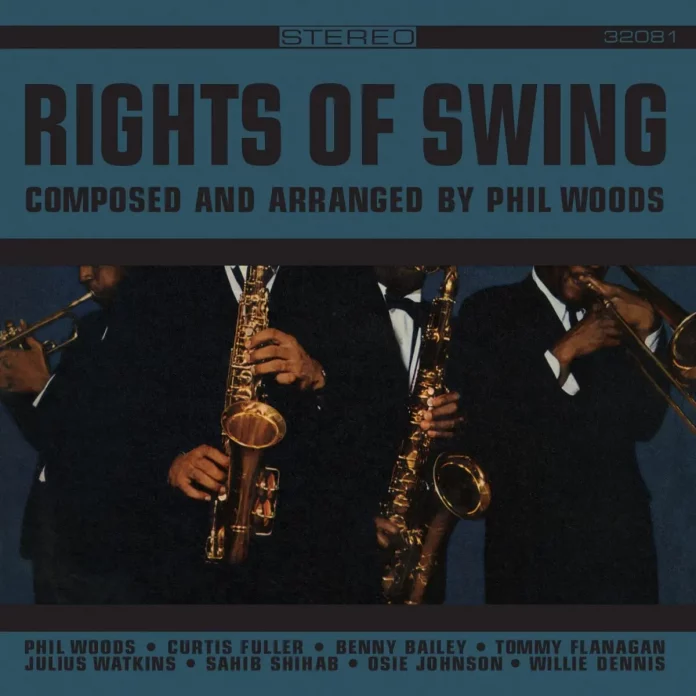Phil Woods wasn’t the first or last to use the plural when referring to Stravinsky’s The Rite Of Spring. Other than that, the slippage from singular to plural in the title of this, his first large-scale composition, might have been meant to indicate how much would be going on.
Recorded at the start of the 1960s and now reissued, the album invoked Stravinsky and the cyclical nature of his revolutionary ballet music, which had friend and foe battling it out noisily at its Paris première in 1913.
The octet Woods assembled for the recording included six colleagues from the Quincy Jones band, with whom Woods was a featured soloist. Jones himself conducted. Composed as Woods played – with unquenchable fire and remorseless discipline – Rights Of Swing is as close as one could get to an original work that reflected the ethos of its composer as soloist.
But there’s a problem with extended jazz works from this era: the ensemble passages are too often perfunctory and too easily cast adrift to admit a queue of musicians waiting to solo. Only in the final part of this suite does the ensemble claim something like worthy attention. There was no doubt that Woods could write colourful and sonorous block passages (the heads and reprises here are lean and sharp), and the presumption was always that the music’s made-up element resided with the single, chorus-chasing musician. That ain’t ever been necessarily so, scored passages being as capable of expression as the spontaneous-sounding.
Woods himself plays with furious intensity and momentum, switching (one presumes, though it’s not credited) to flute towards the end. Bassist Buddy Catlett gets one solo – in the scherzo of Part IV – drummer Osi Johnson none, though he’s ever-active; Julius Watkins on French horn is seemingly reluctant to occupy the spotlight.
On the fast opening section, Woods is soon galloping with the rest and just as soon leaving them, having as elsewhere established himself as primus inter pares and maintaining it. But the section’s pivot note on French horn, a concert A, is a nice structural touch. The tempo is too fast for Watkins, trumpeter Benny Bailey and baritone saxist Sahib Shihab. Trombonist Curtis Fuller and the ever-unfazed pianist Tommy Flanagan fare better.
When the atmosphere cools for the ballad of Part II, everyone benefits, with the expansive Bailey cosied up to by an ensemble that’s ready in other places to rejoin with sympathy and restraint. If only it could have stepped in where lengthy solos had been curtailed.
A reminder to Candid: the name of bassist Catlett is twice spelled Cotlett on the cover. In the liner, Nat Hentoff spells it correctly. Always worth a double check.
Discography
(1) Prelude And Part I; Part II – Ballad; Part III – Waltz; Part IV – Scherzo; (2) Part V – Presto (38.54)
(1) Woods (as); Benny Bailey (t); Curtis Fuller (tb); Sahib Shihab (bar); Julius Watkins (frh); Tommy Flanagan (p); Buddy Catlett (b); Osi Johnson (d); Quincy Jones (cond). New York, 1961.
(2) as (1) but Fuller out, Willie Dennis (tb) in.
Candid CCD32082
















